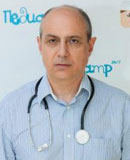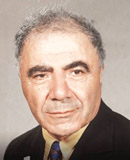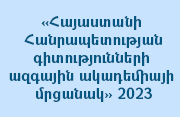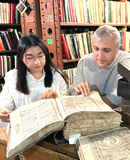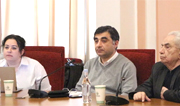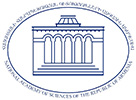 |
|||||||||||||||
|
|||||||||||||||
| Գլխավոր էջ | Ակադեմիայի մասին | Բաժանմունքներ | Կազմակերպություններ | Անդամներ | Կապ մեզ հետ |
|
|
|
 ՀՀ ԳԱԱ գիտության զարգացման հիմնադրամ  Հայագիտական ուսումնասիրությունները ֆինանսավորող համահայկական հիմնադրամ 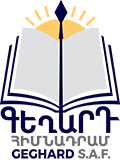 Գեղարդ գիտավերլուծական հիմնադրամ 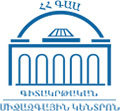 ՀՀ ԳԱԱ գիտակրթական միջազգային կենտրոն  ՀՀ ԳԱԱ հիմնարար գիտական գրադարան  Վիկտոր Համբարձումյանի անվան մրցանակի շնորհման միջազգային կոմիտե  Հայկական ազգային տեղեկատվական կետ HORIZON 2020  EURAXESS-Armenia Portal   Հայաստանի ակադեմիական գիտահետազոտական կոմպյուտերային ցանց |
Նորություններ / Պահոց
|
Ազդեր
Ս.թ. մարտի 30-ից ապրիլի 2-ը ՀՀ ԳԱԱ մոլեկուլային կենսաբանության ինստիտուտը և ՄքՄասթեր համալսարանը (Կանադա) ՆԱՏՕ-ի (Հյուսիսատլանտյան դաշինքի կազմակերպություն) հովանու ներքո անց են կացնում «Ցածր դոզայով ճառագայթահարման ռիսկերը. ընթացիկ հետազոտություններ և ապագա հեռանկարներ» խորագրով առաջադեմ հետազոտությունների աշխատաժողով (ՀՀ ԳԱԱ նախագահության կլոր դահլիճ, Մարշալ Բաղրամյան պող., 24) 2025թ. ապրիլի 15-ին Երևանում կանցկացվի Տեղեկատվական օր՝ նվիրված Գիտության և տեխնոլոգիաների ոլորտում եվրոպական համագործակցության (COST) ծրագրին Ս․թ․ ապրիլի 29-ին ՀՀ ԳԱԱ-ն, ՀՀ ԿԳՄՍՆ-ը, ՀՀ ԳԱԱ ԳԿՄԿ-ը, ՀՐ. Աճառյանի անվան լեզվի ինստիտուտը և Մ. Աբեղյանի անվան գրականության ինստիտուտը ՀՀ ԳԱԱ-ում կազմակերպում են «Հայոց լեզու և հայ գրականություն․ զարգացման միտումները, հանրամատչելիացման հնարավորությունները և դրանց արտացոլումը ուսումնական գործընթացում» համահայկական գիտաժողով Ս.թ. մայիսի 5-8-ը ՀՀ ԳԱԱ Կենդանաբանության և հիդրոէկոլոգիայի գիտական կենտրոնը և Երևանի պետական համալսարանը համատեղ կազմակերպում են «Կենսաբազմազանություն, պահպանություն և կլիմայի փոփոխություն» խորագրով միջազգային գիտաժողով (ք.Երևան, ՀՀ ԳԱԱ նախագահության շենք) 2025թ. մայիսի 5-9 ՀՀ ԳԱԱ Վ.Համբարձումյանի անվ. Բյուրականի աստղադիտարանը Բյուրականում անց է կացնում 17-րդ հայ-վրացական աստղագիտական կոլոքվիումը 2025թ. hունիսի 16-21-ը ՀՀ ԳԱԱ ֆիզիկայի կիրառական պրոբլեմների ինստիտուտը կազմակերպում է Ակադեմիկոս Ալպիկ Մկրտչյանի անվան «Ճառագայթային ֆիզիկա և հարակից կիրառություններ» 4-րդ միջազգային գիտական դպրոցը Երևան քաղաքում 2025թ. hունիսի 23-25-ը ՀՀ ԳԱԱ ֆիզիկայի կիրառական պրոբլեմների ինստիտուտը կազմակերպում է «Ակադեմիկոս Ա.Ռ.Մկրտչյանի անվան ակուստաֆիզիկայի 4-րդ միջազգային գիտական դպրոց-գիտաժողովը» Երևան և Սևան քաղաքներում: Մանրամասները՝ https://school.iapp.am/ 2025թ․ սեպտեմբերի 8-11 ՀՀ ԳԱԱ ֆիզիկական հետազոտությունների ինստիտուտը Երևանում անց է կացնում «Մագնիսական և գերհաղորդիչ նյութեր» XIII միջազգային գիտաժողովը (MSM25) Международный инновационный центр нанотехнологий СНГ (МИЦНТ СНГ) объявляет о проведении в 2025 году очередного Конкурса на соискание грантов и 18-й научной Стажировки для молодых ученых и специалистов из стран СНГ ՀՀ գիտության և տեխնիկայի զարգացման 2020-2024թթ. գերակայության ՀՀ կառավարության որոշման նախագիծ Հրապարակումներ մամուլում
Կայքը հաճախել են
7 283 723 անգամ սկսած 01.01.2005թ.  ՀՀ ԳԱԱ պատկերանիշ (սև, կապույտ) |
 |
Կայքը վերջին անգամ թարմացվել է՝ 22:37, 01/04/2025 |  |
|
Գլխավոր էջ
- Ակադեմիայի մասին
- Բաժանմունքներ
- Կազմակերպություններ
- Անդամներ
- Կապ մեզ հետ
- Կառուցվածք
- Նախագահության անդամներ
|
|||||
|
© Copyright 1998-2025 Բոլոր հեղինակային իրավունքները պաշտպանված են: Կայքը պատրաստված է և սպասարկվում է Հայաստանի ակադեմիական գիտահետազոտական կոմպյուտերային ցանցի կողմից (ASNET-AM): Հարցերի կամ առաջարկությունների համար կարող եք ուղարկել նամակ webmaster {[ at ]} sci.am էլեկտրոնային փոստին: |

![academy [@] sci.am academy [@] sci.am](images/email.jpg)






